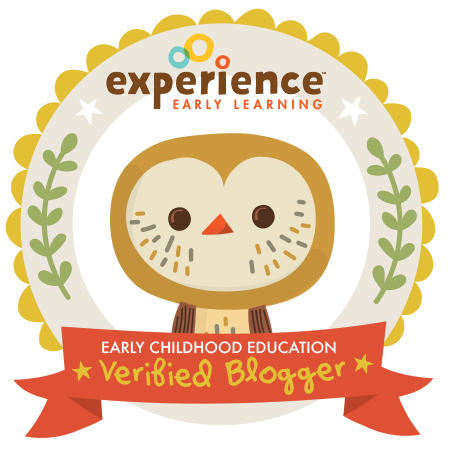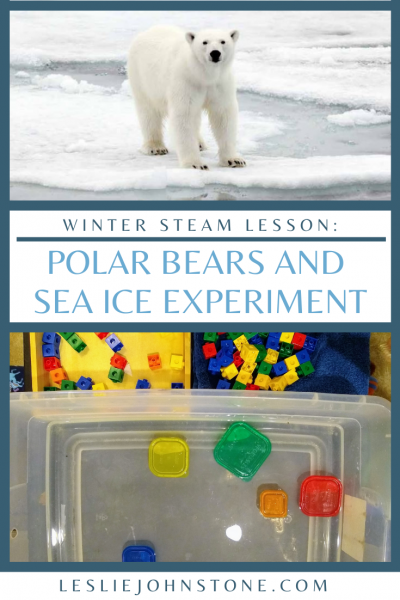*This post contains affiliate links*
My 6 year old daughter has always been curious about animals, and this week with our Ice Castles theme from Experience Early Learning we are spending a whole week learning about animals of the Arctic Tundra. We’ve spent time learning all about Arctic Foxes, Snow Leopards, and today we learned about Polar Bears.
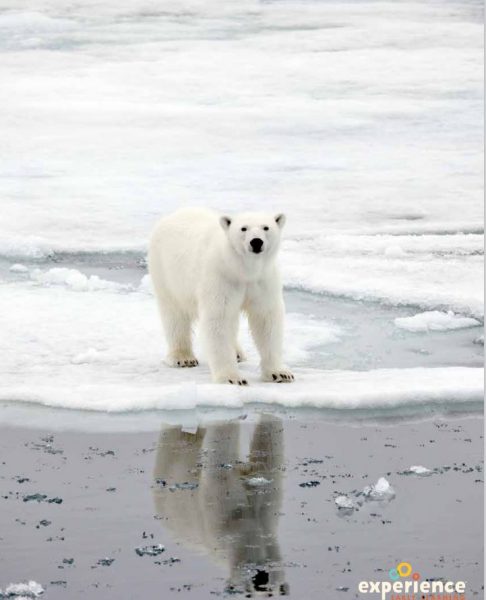
As an Experience Early Learning (EEL) Blogger, I receive the EEL Preschool Curriculum in exchange for my honest opinions and authentic stories about our experiences using the curriculum. All opinions and thoughts are completely my own.
We watched this video on polar bears and learned all sorts of things- one being that polar bears use sea ice to help them hunt for their primary food source: seals. This was the perfect lead into our STEAM lesson today from Experience Early Learning.
Question:
How many polar bears (unifix cubes) can sea ice (lids) hold before sinking?
Hypothesis:
Before testing each lid, my girl made a guess. We started with the smallest lid and worked our way to the largest, and because of that, her hypotheses became better as she saw how each lid performed.
Materials:
This month Experience Early Learning sent us unifix cubes as our monthly manipulative so pulling all these materials together was a cinch!
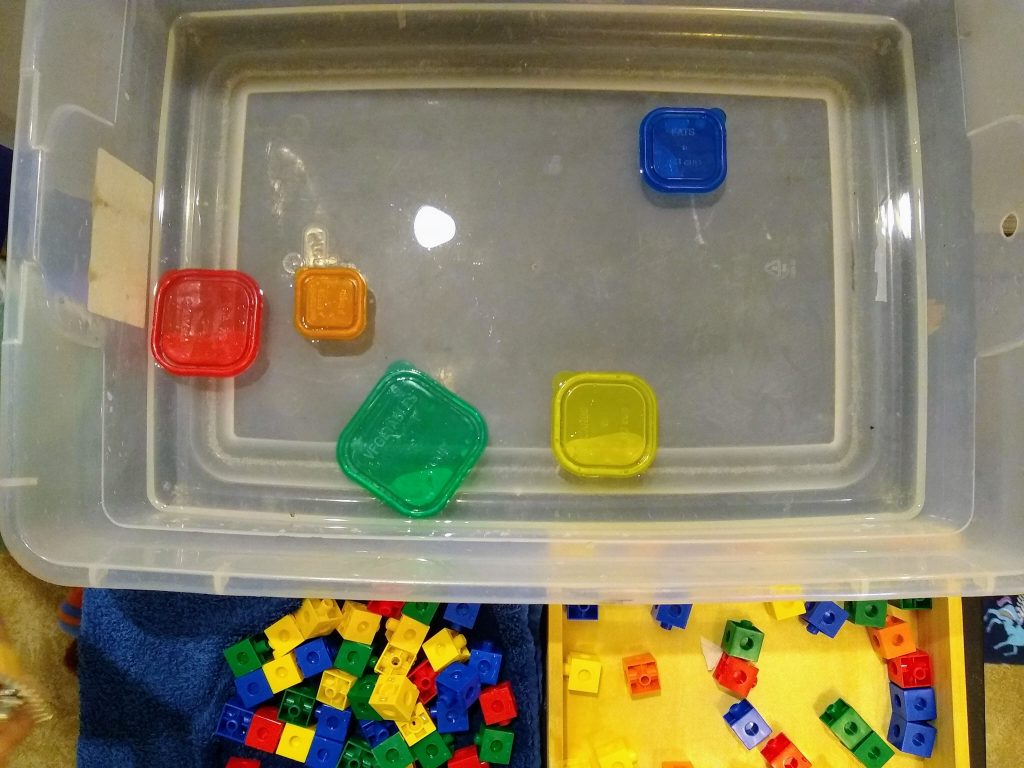
- container of water
- unifix cubes
- lids of varying sizes
- journal to record data
Procedure:
Fill a container with at least 1 inch of water. Place a variety of lids in the water. The lids need to float to simulate sea ice. Have the children place 1 unifix cube at a time on the lid until it sinks. Observe how each lid performs and record your data (older student).
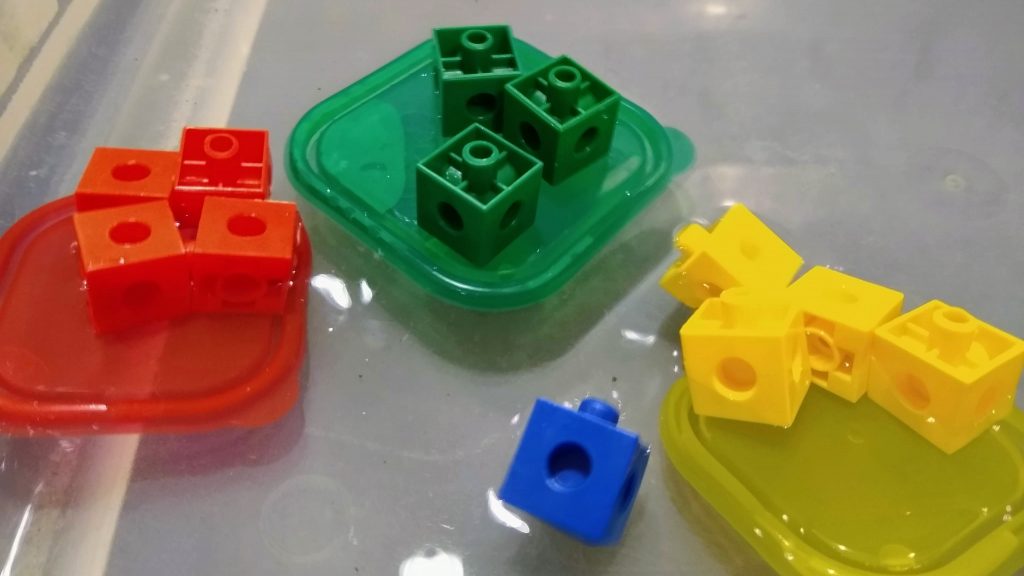
3 blocks 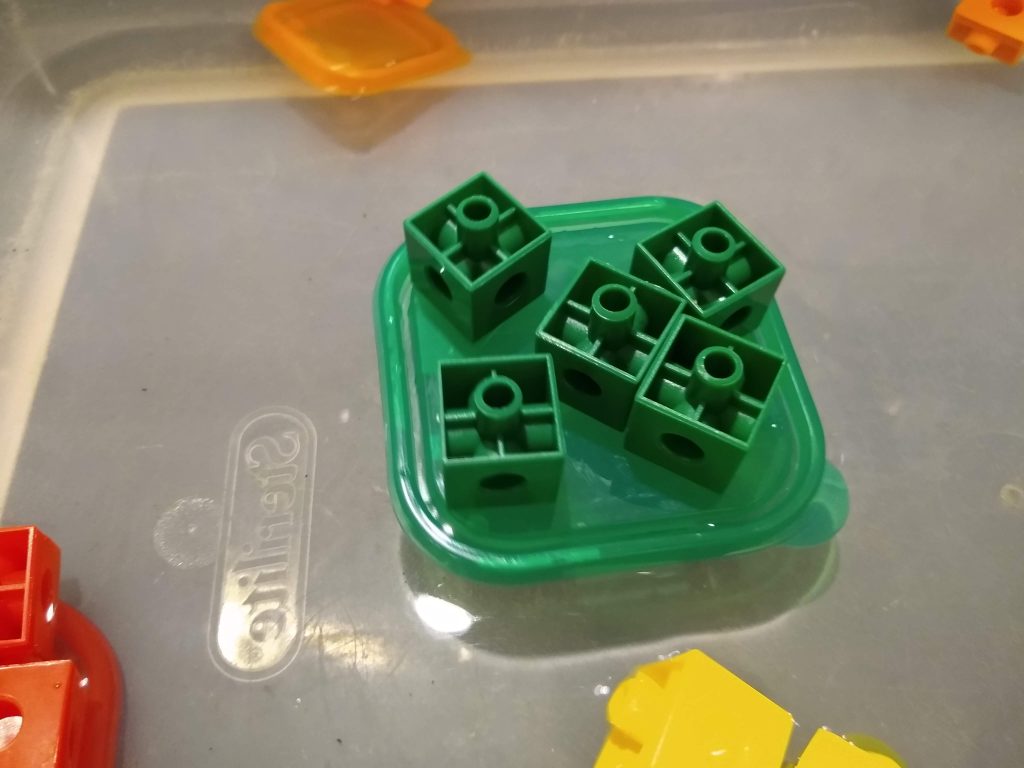
5 blocks 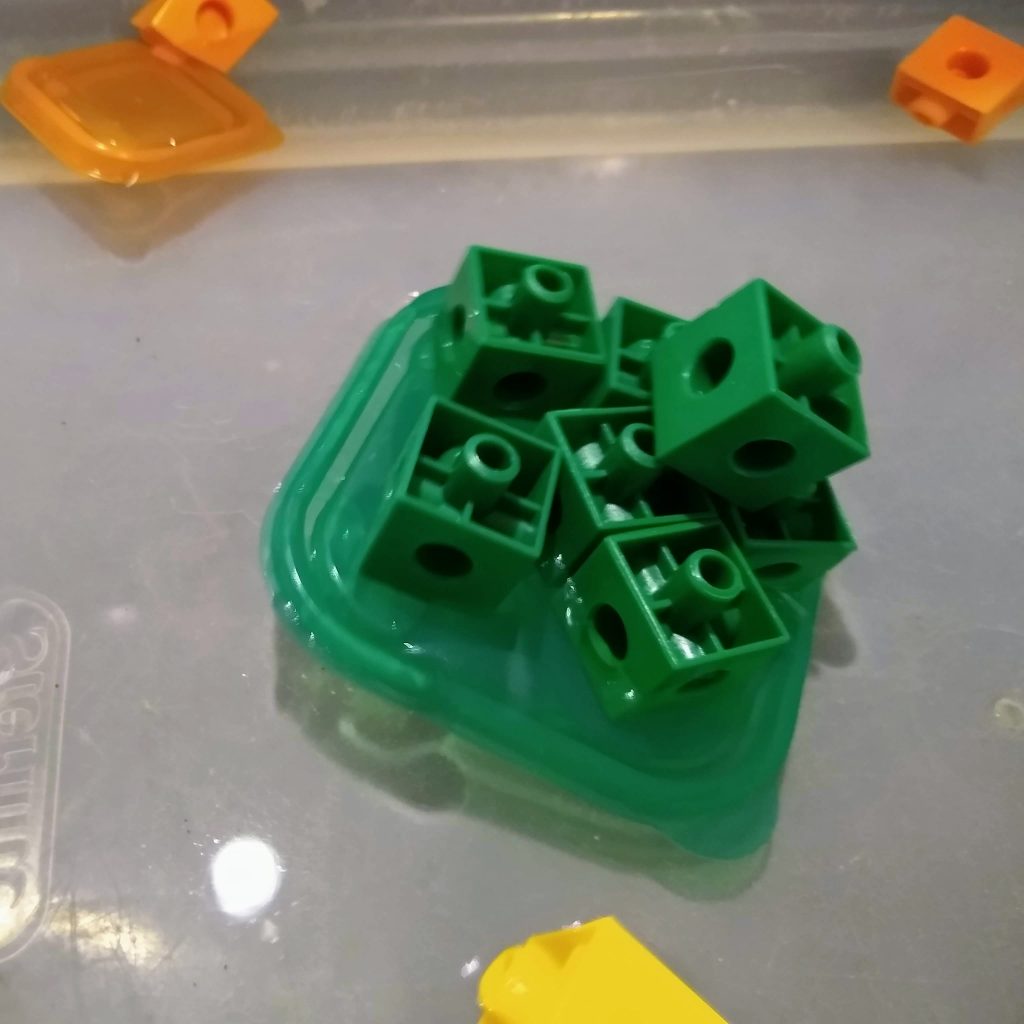
7 blocks sank it! It can hold up to 6 blocks.
We happened to have lids that matched our unifix cubes which helped my 3 year old with color recognition as he placed the matching cubes on the corresponding lids.
My preschool son worked on his one-to-one correspondence as he placed the unifix cubes on the lids and counted, while my daughter worked more on recording the data in her journal. She traced each lid in her journal and colored it. She recorded in black crayon how many cubes the “sea ice” could hold before it sank.
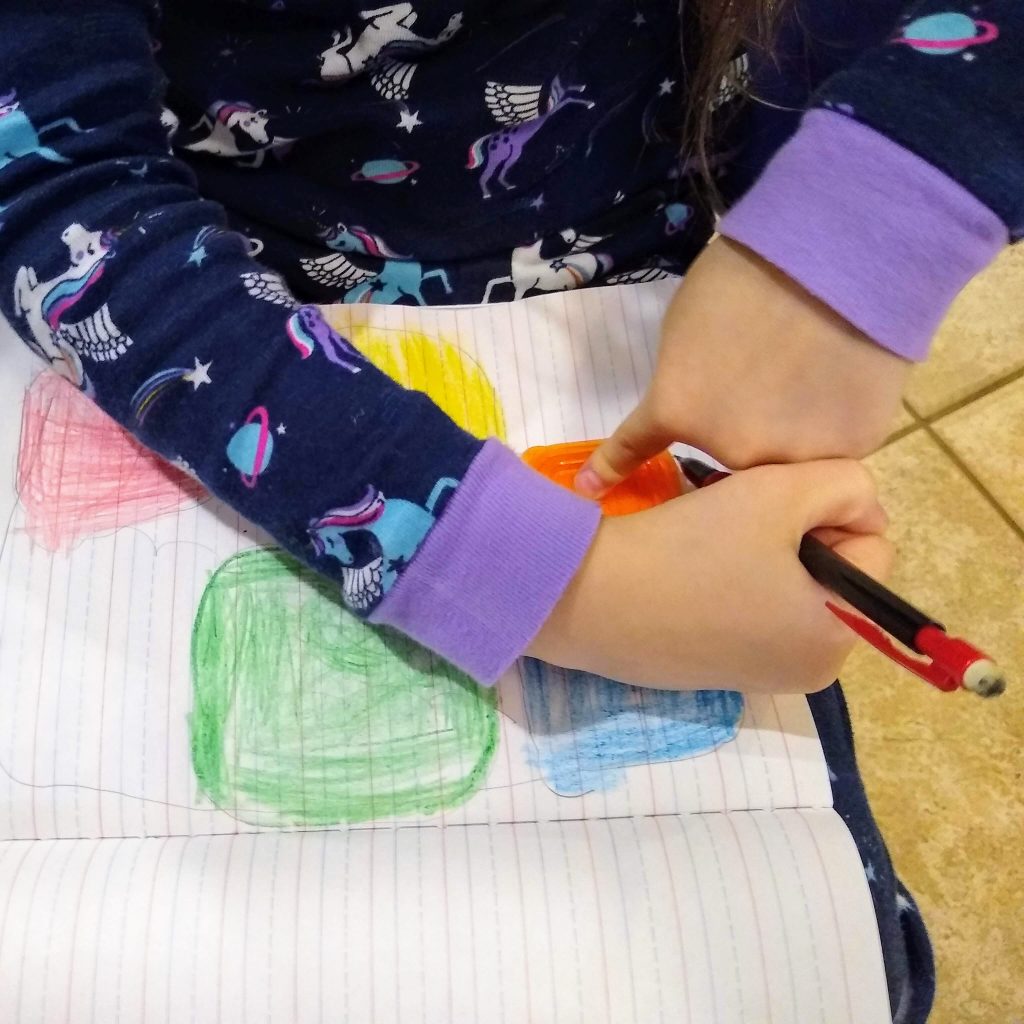
We discussed what was the one thing that changed in our experiment, which was the size of the “sea ice” (lid) and that this was our independent variable.
Results/ Conclusion:
We discussed our results after our experiment and I wrote a fill in the blank conclusion statement on my girl’s journal:
The __(LARGER)_____ the ice pack, the _____(MORE)_____ it can hold. She filled in the blanks from our discussion.
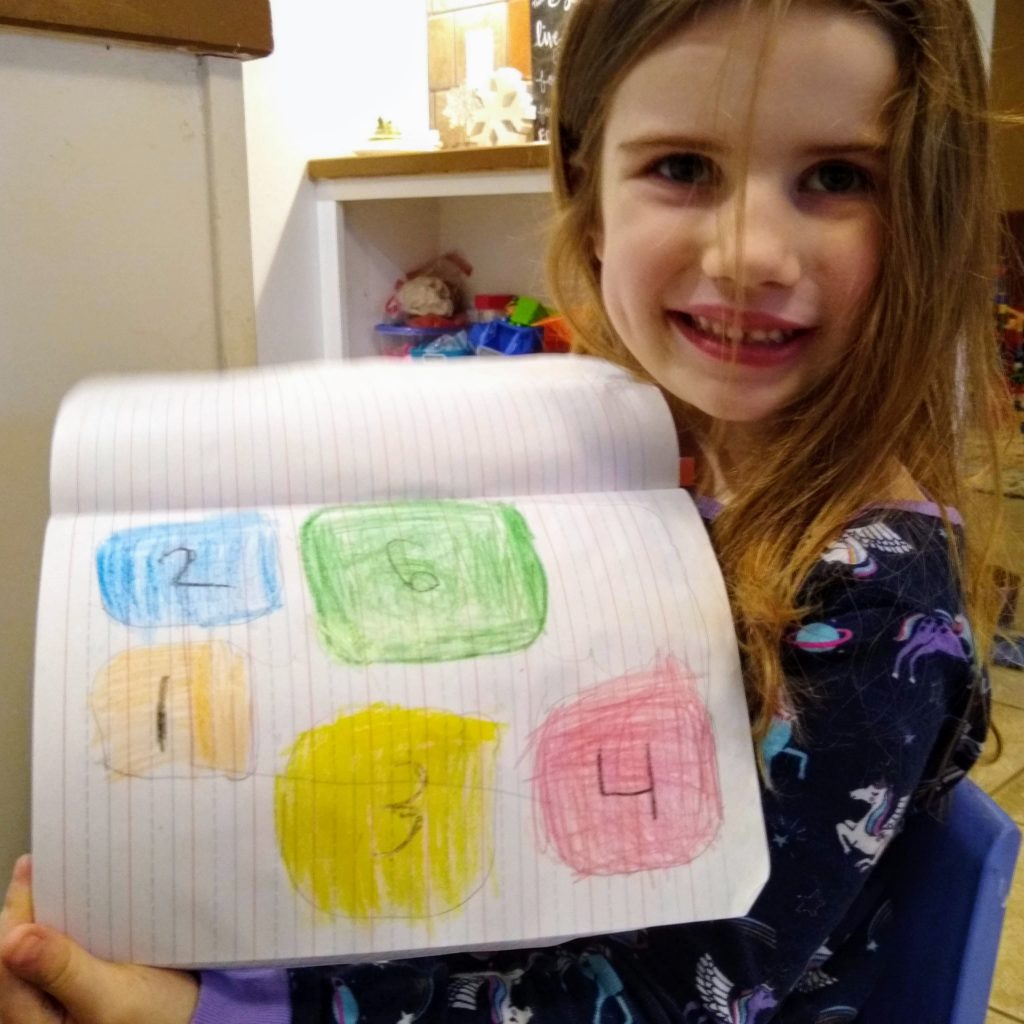
Experiment Results 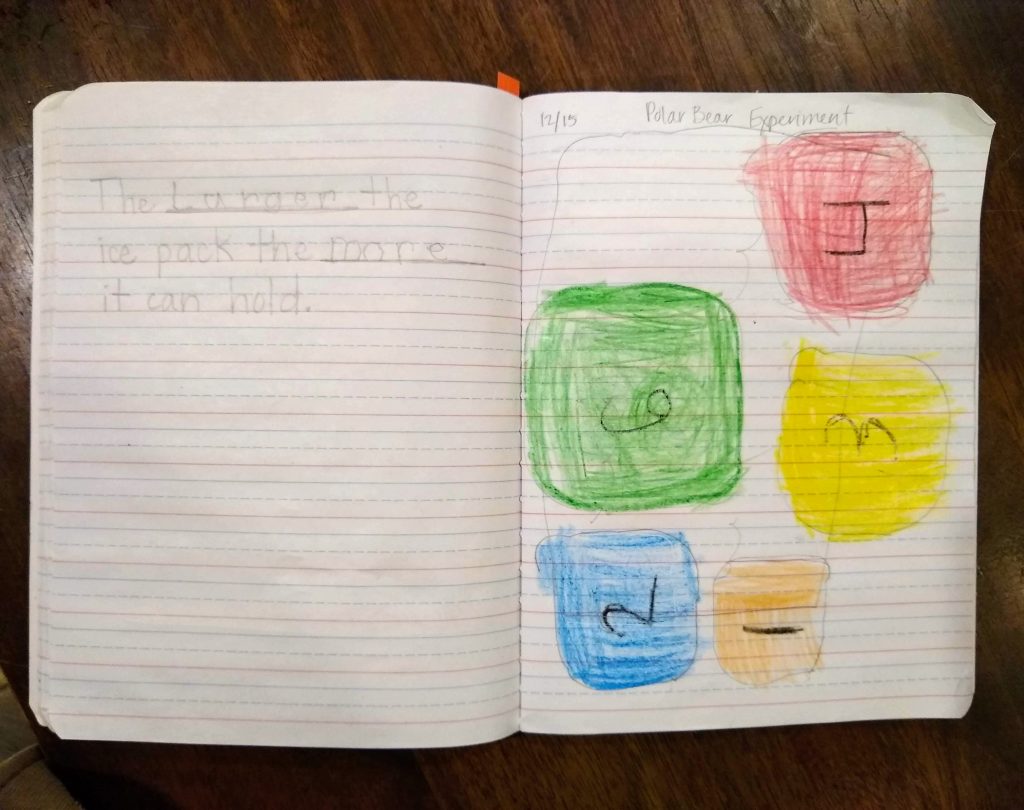
Written Conclusion
I absolutely love these little STEAM experiments from Experience Early Learning… obviously because I blog about them all the time! They are so easy to put together and can truly give little kids a taste for the experimental process. Seriously do not miss out performing experiments with your littles!
